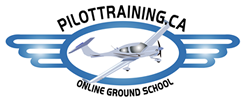How much does it cost to learn to fly?

One of the major misconceptions about flight training is that it’s
only for the rich, that ordinary people can’t afford it. I’m not going to try to fool you, it’s not cheap, but on the other hand, I’m willing to bet it’s not as expensive as you think it is.
Unfortunately, there is no simple answer to the question, “How much will it cost?” The answer depends on a number of variables.
To earn a Private Pilot licence a student has to meet certain experience and knowledge requirements established by the Transport Canada. The *minimum* flight time required to get a private certificate is 45 hours, 17 of which must be dual instruction (including three hours of cross-country, five hours of instrument, preparation for the flight test) and 12 of which must be solo (during which the student is the only occupant of the airplane). The solo time must include 5 hours of cross-country flights.
Don’t let anyone mislead you. Unless you spent your youth in your father’s lap handling the controls of the family airplane during Thanksgiving trips to your grandmother’s, you’re not likely to complete the training in the minimum time. The national average is between 60 and 80 hours, and while some students complete their training in less time, there are others who take longer.
How much it is going to cost is directly related to how long it takes. Some students catch on quickly, others take longer. With any learning process, the more frequently a student is able to take lessons, the more quickly the skill is obtained and the better the retention. Most flight schools suggest students try to take lessons at least once a week in order for the most efficient learning to take place.
It’s unfortunate, but many students gauge their progress by how long it takes them to solo and then to get their certificate. It’s hard—and often counterproductive—to try to come up with average times. Sure, there was a time when people soloed in five or 10 hours. But that was before it became necessary to learn radio procedures and complicated airspace classifications prior to solo, and when the training usually took place at airports with little traffic. The airport and airspace where the instruction takes place can often extend the time before solo; nevertheless, most students do manage to solo after some 15 to 20 hours of dual instruction. It’s important to remember that the time it takes you to solo is not an indication of what kind of pilot you’ll eventually be.
Flight training is structured on a “building block” concept and progress is measured not in flight hours but in the ability of the student to perform required skills. Training maneuvers are broken down into skill segments; as each skill is acquired, it is combined with others until a more complex maneuver can be performed satisfactorily. The student progresses from block to block until he is able to perform all the maneuvers to the standards required by the Flight Test Guide (Transport Canada published list of specific maneuvers and tolerances a pilot is required to be able to demonstrate in order to earn a licence).
What’s important is not how long it takes, but how well you learn. Learning to fly is a fun process. There’s no reason to rush it!
